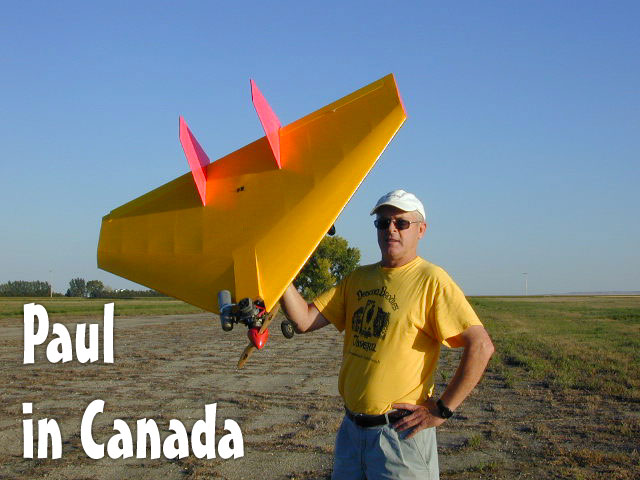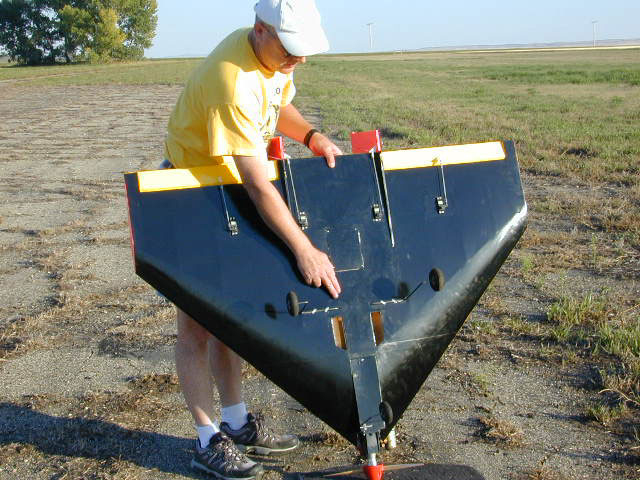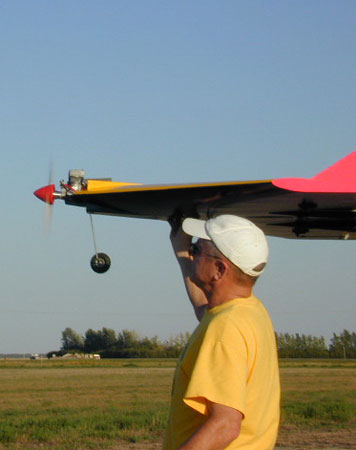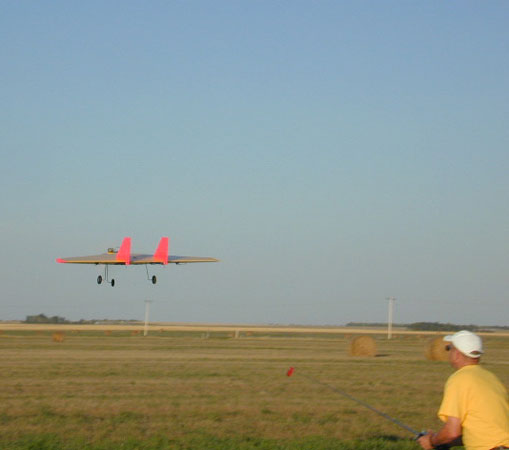

"I purchased and built two DV's over the last couple of years. I purpose built them for a proposed bird detterent contract at our local airbase. So far, we havn't even been able to get as far as getting an agreement on providing a demo flight, but that is not my point here.



More info from Paul about the bird control project...
1. In 1989 the Canadian DND and MOT decided to run trials jointly to determine whether a remotely piloted vehicle (RPV) could be utilized, along with other bird deterrent devices, to reduce the numbers of birds (mainly gulls) around military and civilian airports. The two government departments contracted a company that was based in New York State . The company was headed by two ex-patriot Israelis, who were both qualified engineers. While still in Israel they had developed a very effective system to control birds at Ben Gurion airport. They reduced the bird population dramatically from the many hundreds of thousands of birds normally present. This achievement was also done in a very short span of time and the reduction of the population was further maintained through regular “patrols”.
2. I was part of the original team involved in the training and test trials of this program. We flew the RPV out of the municipal dump adjacent to the airport at North Bay , Ontario . Is it not funny how landfill sites and airports always seem to be co-located? The RPV that the Israelis provided was simple and tough. It was hand launched and sturdy enough to recover amongst the junk and debris one would expect to find at a city dump. This RPV was also equipped with a three barreled cannon, shooting 12 gauge bird fright shells on command. The red aircraft in the pictures is the Israeli design, the cannon is visible on the port side.
3. Our local airbase has at times a fairly significant bird problem, mostly due to the influx of Franklin gulls. The current method of control is to have a worker drive about the airport armed with a shot gun, firing bird fright shells toward the offending bird population. This is a slow process and often holds up flying operations for quite some time. The most serious disadvantage to this solution is that the birds are raised off the ground and into the air. In other words, the hazard is now out of control, flying at will about the aerodrome. The RPV can quickly intercept, divide and control the birds, moving them exactly where the operator wants them. If there is a local food source that encourages the presence of birds, either the food source must be removed or the birds can be kept away from the source by regular patrols with the RPV. It does not take long for that population to move on, out of the area.
4. I continually practice my techniques and strategies at a nearby abandoned WW2 airfield. I have used various aircraft designs and have determined that the delta wing design is the most suited to the task. The ability to climb, pull heavy G loads, remain visible at a distance along with being capable of handing rough field operations are some of the main considerations. The best Delta design for this purpose has been the Delta Vortex. This is one tough bird! I built two copies; one DV is kept as a back-up. After several years of heavy use I have still not had to call in the back-up DV, number one is still doing the job.
5. Modifications are very simple. I made landing gear wires that are longer and more flexible to absorb the energy of rough landings and failed hand launches. The nose gear is non-steerable, again for toughness. I have done ROG’s off paved surfaces with this setup as the rudders are effective after a short distance. Finger wells were also built into the belly, close to the center of gravity to facilitate hand launching. Power is provide by a Supertigre G90.
<Go Back to Index Go to Next Model>